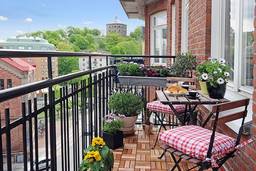Top tips for balcony safety

Top tips for balcony safety
However, when it comes to enjoying your balcony, safety should be the first priority, as a shaky platform, insecure railings, or a slippery surface could pose a threat to your family and friends.
Here are some general safety guides to follow if you have a balcony, or are thinking of building one, and want to put safety first:
Firstly, make sure you regularly check your balcony for signs of wear and tear. Cracks, leaning to one side, or rust are all signs that your balcony may be ageing and in need of a revamp. If you have a wooden balcony, make sure you inspect the wood underneath, and on the balcony surface, to ensure it is not rotting or sprouting mildew, as decaying wood is weak and can give way without warning.
Make sure you are aware of the latest safety recommendations regarding balcony construction if you are thinking of, or are in the process of, building your balcony.
Always check with construction companies to ensure they pay heed to such regulations, and if you are not sure, measure the gaps in between your balcony railings or floorboards yourself to see if they are within safety standards.
Safety precautions are always best installed at the initial stages of building your balcony. However, it is never too late to update your balcony’s safety features. Make sure your balcony door has two locks, one normal lock, and one deadlock positioned above the reach of the average child to prevent children from wandering onto balconies without supervision.
Make sure your balcony flooring is not a slippery surface to limit falls, avoid non-textured tiling or any other surface that becomes slippery in wet weather.
If you have children, ensure you keep decor items or seating away from the perimeter of the balcony railing, as these items could be climbed and give a child access to the edge of the balcony, which puts them at risk of falling.
